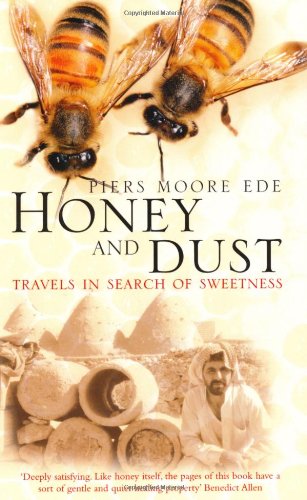Cueilleurs de miel
This is a beautiful coffee-table (and nearly coffee-table sized) book by Eric Tourneret and Sylla de Saint-Pierre with accounts of beekeeping and honey gathering (the title translated) from around the world – Russia, Nepal, New Zealand, USA, Mexico, Argentina, Cameroon, France and Romania. The text is in French. The images are stunning, both photographically and in the way they capture the individual – and very distinctive – cultures of honey gatherers from different countries. Definitely ‘honey gatherers’ and not beekeepers, as many collect honey from wild colonies. Wild, and in some cases, livid.
Those in the west will easily recognise beekeeping practices in the USA (“Nomads of pollination“), shifting thousands of hives to the almonds, David Hackenberg, forklifts, industrial scale operations. We’re also familiar with the rooftop beekeeping in great cities like Paris, with hive designs we recognise, though perhaps less familiar with the architecturally breathtaking backdrops to their day-to-day colony inspections.
Other countries will be even less familiar. Mexico, with small black stingless bees (Trigona scaptotrigona) or Romania, with bright painted ‘bee sheds’ on the back of flatbed trucks and lorries, being moved around to the nectar. Some of the most impressive images are from Nepal* where they harvest honey from open colonies of Apis laboriosa hanging from cliffs. These are far from stingless.
You can get a preview of some of the images from Eric Tourneret’s website, including those from Nepal.
Even if you don’t speak French it’s worth trying to get hold of a copy of this book for the images alone … Waouh!! is the view expressed by one of the reviewers on amazon.fr
*Anyone interested in reading more about the Nepalese honey gatherers is recommended to also read Honey and dust: Travels in Search of Sweetness by Piers Moore Ede, which has a very good account of the risks taken to secure the honey.


Join the discussion ...